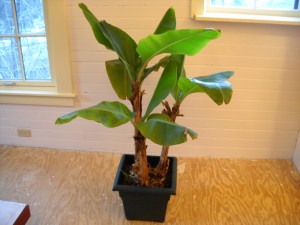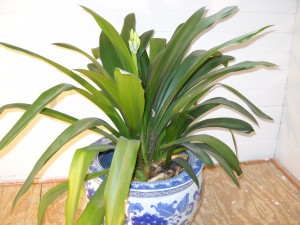Easy Houseplants to Brighten Your Winter
Before we launch into this week’s article…
Gardening Classes with Henry
Lebanon College: Gardening: A Practical Workshop. Garden writer Henry Homeyer will teach you the basics of organic vegetable and flower gardening. From garden design to seed-starting , planting, watering, weeding, mulching, and harvesting, this course will give each student practical knowledge of gardening. Tuesday nights from 6:30-8:30 for 5 weeks, April 3-May 2.Contact Lebanon College to reserve a spot for this5-part workshop www.lebanoncollege.edu or call 603-448-2445.
AVA Gallery, Lebanon. Henry will teach 3 classes at AVA Gallery this spring. You may sign up for one or all of these workshops:
Sculpting the Living Landscape: Starting Flowers from Seed
April 9; Monday, 6:30–8:30pm; One 2-hour class
Sculpting the Living Landscape: Perfect Perennials for the Upper Valley Garden
April 23; Monday, 6:30–8:30pm; One 2-hour class
Sculpting the Living Landscape: Organic Techniques for Enriching Soil and Managing Pests
May 7; Monday, 6:30–8:30pm; One 2-hour class
For more information go to www.avagallery.org or call 603-448-3117.
Easy Houseplants to Brighten Your Winter
Many a would-be gardener has been deterred from growing veggies or flowers outdoors because they’ve had a bad time with houseplants. “Garden? Not me! I’ve got a brown thumb.” If I’ve heard it once, I’ve heard it dozens of times. When I inquire, people tell me they’ve killed houseplants, even the so-called “bullet proof” ones.
More houseplants are killed by over-watering than by under-watering. Some inexperienced gardeners think they are being kind and attentive to their plants by watering often. But roots of most houseplants will rot if kept constantly wet. So my first rule of indoors plants is simple: only water a plant when the soil is dry to the touch. For most, that is no more than once a week. For some once every 3-4 weeks is adequate.
Some houseplants are grown for their blossoms and others for their lovely foliage. Foliage plants are generally the easiest: if it isn’t dead, it probably looks good.
Jade plant (Crassula ovate or C. argentea) is an easy plant that is almost trouble-free. It has thick, waxy succulent leaves that are round and shiny. The trunk is thick in mature plants, and is a smooth gray or brown. My friend Cindy Heath has one, and it languishes in her living room getting no care at all. I mean it gets little direct sunshine and if it gets a drink of water every couple of months, it’s lucky. Last summer I carried it outside on the porch for some sunshine, which prompted a growth spurt.
Jade plants are easy to propagate. Bernice Johnson of Cornish Flat, NH, showed me a jade plant that she started from a cutting 3 years ago that is now about 2 feet tall and 2 feet across. She said that to get a new plant she just snips off a short section of a branch with a leaf or two, and plants it, or sets it in water to root, then plants it. She plants her many houseplants in a mix of garden soil and compost she makes herself from leaves and garden waste. The soil drains well, which is important. She keeps the plant near a north window and waters it about once a month. I find a 50-50 mix of compost and potting soil is good for most houseplants.
Happy Griffiths of Lebanon, NH grows many houseplants, including both rosemary and bay. Those two not only produce handsome foliage, but also edible herbs for use in the kitchen. Both, she told me, like a cool environment with bright natural light. She keeps hers in an unheated sunroom that gets down below freezing on cold nights, but never very cold. Some forms of rosemary bloom annually, though other types do not.
If you grow rosemary indoors, you need to increase the water you give it starting in March, or even by mid- February. The sun is stronger, the days are longer, and the roots and leaves are beginning to grow. Even though it is a Mediterranean plant, if it gets totally dried out – as mine have in the past – the plant dies. Instead of once a week, water twice a week.
I grow clivia (Clivia spp.) as a foliage plant – it has long, shiny strap-shaped leaves and requires virtually no care. I’ve had mine for more than 10 years and have never divided it nor fertilized it. Even so, once a year it sends up a flower spike with a big cluster of orange blossoms that last for a couple of weeks. I water it very irregularly –once a month, if I think of it. It doesn’t need direct light, which is nice as I have it in a pot too big for the window sill. Its leaves stand about 30 inches tall.
Another nice foliage plant is aloe (Aloe vera)). It is a succulent that needs little watering, rarely has pests, and survives wherever you plunk it. A nice benefit is that if you cut a leaf and rub the juice on a burn or insect bite it will soothe your skin.
Bernice Johnson grows lots of old fashioned geraniums (Pelargonium spp.) that she keeps on sunny window sills. When I visited her recently she had one in full bloom in her warm kitchen that also has a wood stove. Wood stoves generally are hard on houseplants – they make rooms too hot and too dry for most. But her geraniums thrive – in part because she waters them regularly. In the spring she will cut back the long stems and put them outside, pots and all, for the summer.
I recommend that everyone have a few houseplants. I have too many (including a large banana plant, a hibiscus tree, a nice clump of papyrus and many more). Plants make the interior air more humid, and some take out pollutants. And best of all, they keep my hand in gardening activities all winter long.
Visit Henry’s Web site, www.Gardening-guy.com for more information and photos of houseplants. His e-mail is henry.homeyer@comcast.net
Web Extras: Other House Plants I Grow
 Another great foliage plant I grow is a banana “tree”. They don’t get woody, even in the tropics, but can get tall – even in the house. I got a small one 5 years ago and have been growing it in a large pot since then. In the summer it is outside, and in the winter I keep it in a west-facing window. Well, not in the window,but on the floor near the window. The banana has yet to produce fruit, but it has made 3 or 4 shoots that I intend to separate next summer and put in individual pots. My banana is now 4 feet tall, and has never had aphids or other pests.
Another great foliage plant I grow is a banana “tree”. They don’t get woody, even in the tropics, but can get tall – even in the house. I got a small one 5 years ago and have been growing it in a large pot since then. In the summer it is outside, and in the winter I keep it in a west-facing window. Well, not in the window,but on the floor near the window. The banana has yet to produce fruit, but it has made 3 or 4 shoots that I intend to separate next summer and put in individual pots. My banana is now 4 feet tall, and has never had aphids or other pests.
The exception to the rule, “Don’t overwater” is the papyrus. It needs to grow in a constantly wet location. I planted a small one a few years ago in a nice Chinese vase that has no hole. I water until the water is saturated and standing water is above the soil line. I grow mine in an east-facing window. The stems get to be 3-feet tall, with nice lacy fronds.
Pineapple plants, decorative ones, are also on the market this year. I got one at a florist shop and it is very nice. It has a miniature pineapple on a stem above the foliage, but it will never get big – or edible.



